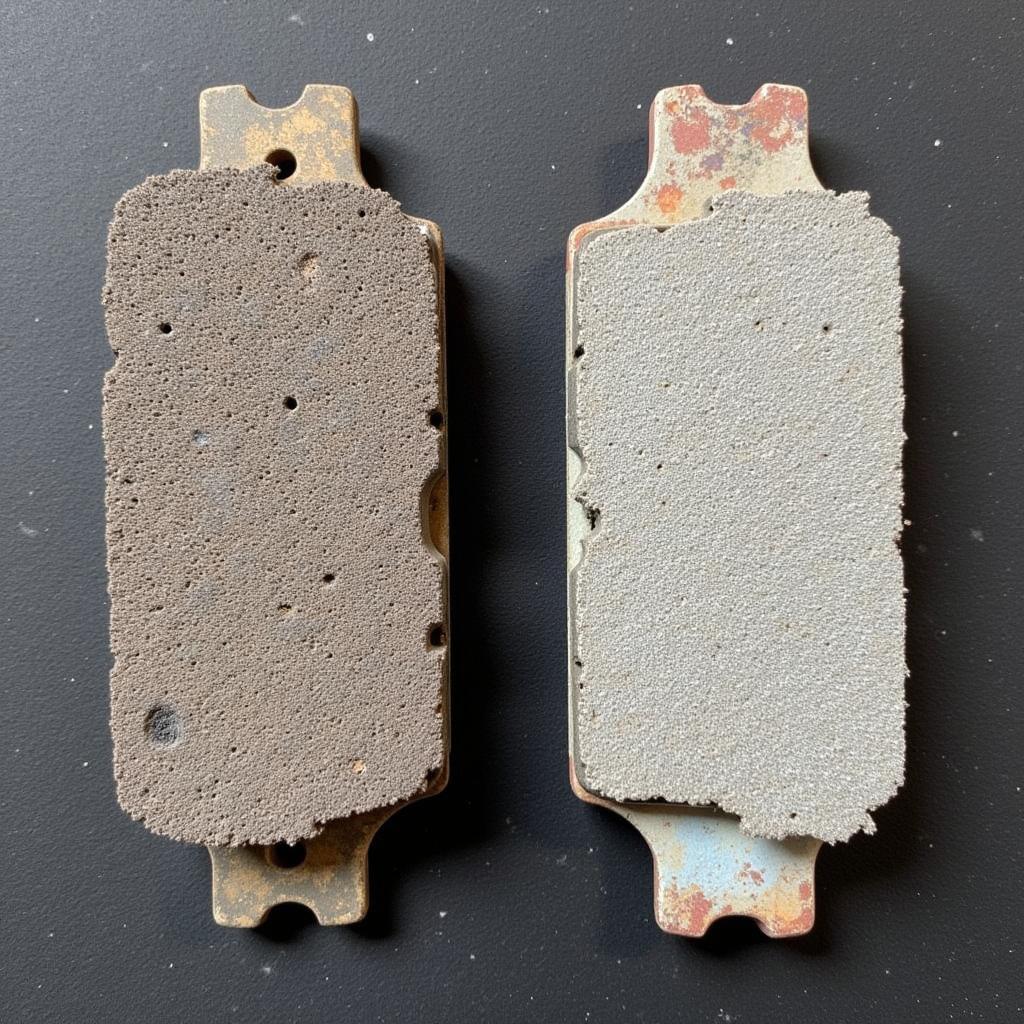The dreaded brake pad warning light on your E30 can be a nuisance, but understanding how to diagnose, reset, and even prevent it can save you time, money, and potential headaches. This guide provides a detailed walkthrough of the e30 brake pad warning light reset process, covering everything from basic troubleshooting to advanced diagnostic techniques.
Understanding Your E30’s Brake Pad Warning System
The brake pad warning light is a crucial safety feature designed to alert you when your brake pads are worn and require replacement. Ignoring this warning can lead to costly repairs and compromised safety. The E30 utilizes a simple yet effective system involving sensors embedded within the brake pads. These sensors trigger the warning light when the pad material wears down to a critical level.
How the Brake Pad Sensors Work
The sensors are essentially small wires embedded within the brake pad material. As the brake pads wear down, the sensor wire eventually makes contact with the rotor, completing a circuit and illuminating the warning light on your dashboard. This simple mechanism provides a clear indication that it’s time for new brake pads.
Diagnosing the Brake Pad Warning Light
While the warning light usually indicates worn brake pads, it’s essential to rule out other potential causes before rushing to replace them. Here are some common reasons for the light to illuminate:
- Worn Brake Pads: The most common cause.
- Damaged Sensor Wire: The sensor wire can become damaged or disconnected, triggering the light prematurely.
- Faulty Wiring: A short circuit or damaged wiring in the brake system can also cause the light to come on.
- Low Brake Fluid: While a separate warning light usually indicates low brake fluid, it can sometimes contribute to the brake pad warning light illuminating.
Checking Your Brake Pads
Visually inspect your brake pads. If they appear thin or you notice a significant difference in thickness compared to new brake pads, it’s likely time for a replacement.
 Worn E30 Brake Pads
Worn E30 Brake Pads
Resetting the Brake Pad Warning Light
Once you’ve replaced your brake pads and addressed any other issues, you’ll need to reset the warning light. While the exact procedure may vary slightly depending on the year of your E30, the general process is as follows:
- Disconnect the Battery: Disconnect the negative terminal of your battery as a safety precaution.
- Locate the Sensor Connector: Find the connector for the brake pad sensor. This is usually located near the brake caliper.
- Inspect the Connector: Check for any damage or corrosion on the connector. Clean or replace as needed.
- Reconnect the Connector: Reconnect the sensor connector securely.
- Reconnect the Battery: Reconnect the negative terminal of your battery.
- Test the Brakes: Turn on the ignition and test the brakes. The warning light should now be off.
What if the Light Stays On?
If the warning light persists after replacing the brake pads and resetting the system, it’s crucial to have a qualified technician diagnose the issue. It could indicate a more serious problem within the braking system.
“Regular brake inspections are crucial for maintaining safety and preventing costly repairs,” advises Hans Schmidt, a veteran automotive technician specializing in BMW diagnostics. “Don’t underestimate the importance of addressing the brake pad warning light promptly.”
Preventing Future Issues
Regular maintenance is key to preventing brake pad warning light issues. Here are some proactive steps you can take:
- Regular Brake Inspections: Inspect your brake pads visually every few months.
- Quality Brake Pads: Invest in high-quality brake pads.
- Proper Driving Habits: Avoid aggressive braking and coasting to a stop whenever possible.
 E30 Brake Pad Replacement
E30 Brake Pad Replacement
Conclusion
The e30 brake pad warning light reset process is generally straightforward, but understanding the underlying system and taking proactive steps can save you time and ensure your safety. Don’t ignore this essential warning, and remember, regular maintenance is key to a healthy and reliable braking system.
FAQ
-
How often should I replace my E30’s brake pads? Brake pad lifespan varies depending on driving habits and conditions, but generally, they should be replaced every 25,000 to 70,000 miles.
-
Can I drive with the brake pad warning light on? It’s strongly discouraged. Driving with worn brake pads can compromise your safety and lead to more expensive repairs.
-
Why is my brake pad warning light flashing? A flashing light often indicates a more serious issue within the braking system and requires immediate attention from a qualified technician.
-
How much does it cost to replace brake pads on an E30? The cost varies depending on the type of brake pads and labor rates.
-
Can I reset the brake pad warning light myself? Yes, in most cases, you can reset the light by following the steps outlined in this guide.
-
What tools do I need to replace brake pads on an E30? You’ll need basic hand tools, including wrenches, sockets, and a jack.
-
What should I do if I’ve replaced my brake pads, but the light still stays on? Consult a qualified technician for diagnosis. “A persistent warning light after pad replacement often points towards a deeper issue, like a faulty sensor or wiring problem,” explains Anya Petrova, a BMW specialist with over 20 years of experience.
